The Malia CAL is officially over…
…but the patterns will remain on my blog free for use! I’ve left the original CAL information below.
Malia Beanie | Malia Slouchy | Malia Infinity Scarf | Malia Buttoned Cowl | Malia Newborn Beanie | Malia Earwarmer | Malia Messy Bun Beanie | Malia Boot Cuffs | Malia Wrist Warmers
Remember, All Access Passhttps://members.yarnandchai.comholders get ALL of these patterns in ad-free format, plus ALL of my other patterns!
– – – – – –
First Things First… What’s a CAL?
A CAL (Crochet-Along) is an online event where a pattern (or series of patterns) is released over the course of a number of weeks, and a community of crocheters works on it together. The Malia CAL will begin on October 25 and last for 4 weeks.
I’ve designed this CAL so that you can pick and choose which patterns you want to create based on your own personal style! The first week is hat week, which includes a beanie and a slouchy version of the Malia Hat. The second week is scarf week, which includes an infinity scarf and a buttoned cowl. (The third week is a bonus week, which I’ll talk more about later.) So, you can choose which patterns you want to make… or, make them all! Each pattern from the first 2 weeks will include a video tutorial. All patterns are sized for a teen / adult (with the exception of one of the bonus patterns).
–
Here’s the Schedule:
You’ll find all of the links for the CAL right here as they are released.
Week 1: Malia Beanie + Malia Slouchy
Week 2: Malia Infinity Scarf + Malia Buttoned Cowl
Week 3: BONUS WEEK! Malia Newborn Beanie + Malia Earwarmer + Malia Messy Bun Beanie
Week 4: BONUS BONUS WEEK! Malia Boot Cuffs + Malia Wrist Warmers
(What’s Bonus Week, you ask? Well… it’s a week of awesome bonuses, like more patterns for you using the beautiful Malia stitch pattern, plus even more goodies that I can’t reveal yet!)
–
Join the CAL Facebook Group
Life is better together, right? That’s the heart behind a crochet-along, too! If you’re on Facebook and want to join our private group to ask questions, post progress pics, or just meet new friends while you work through the CAL, request your invite by clicking here.
––
Choose Your Yarn
For these patterns, you’ll want to look for a soft aran weight yarn. Aran is part of the #4 family of yarn weights and is just a tad bit thicker than worsted. The three yarns listed here are my recommendations for this CAL; I’ve gauge-checked all of them and come up with the same results (see later section, “Check Your Gauge”). Of course, you can choose any yarn you want, as long as you can match gauge!
Rustic Romantic | Yarn Bee
The absolutely gorgeous yarn you see in my CAL photos is Rustic Romantic by Yarn Bee (a Hobby Lobby brand). As soon as I saw it I was smitten! The colors, though limited, are sophisticated and charming. If you’re into the rustic modern look and you love natural-looking hues, this is a great option. It is 85% acrylic and 15% hemp; the hemp provides those beautiful white flecks running throughout the strands that gives it a weathered look. It is surprisingly soft and warm, with great stitch definition and absolutely charming color names like “Faded Porch Swing” and “Blueberry Bushel.” It is machine washable but lay flat to dry, so if that’s an issue for you, it’s something to consider. Rustic Romantic sells for $5.49 for 228 yards.
I Love This Yarn | Hobby Lobby
A staple for Hobby Lobby shoppers, I Love This Yarn is a soft aran available in a huge range of colors, from bright and cheery to soft and subtle. Besides solid colors, it also offers various shades of metallic, tweed, and multis. It has good stitch definition, good drape, and you get 355 yards in a $3.99 skein, making it a great option if you’re budget-conscious. It’s 100% acrylic and machine washable and dryable.
Vanna’s Choice | Lion Brand
One of Lion Brand’s most popular yarns, Vanna’s Choice comes in a large selection of colors and is readily available in most large craft stores and online. It has a similar look and feel to Rustic Romantic (minus the hemp) and usually rings in at about $3.99 for 170 yards.
–
How Much Yarn Do You Need?
Because this CAL includes two different hat styles and two different scarf styles to choose from, you’ll need to determine which patterns you want to make in order to know how much yarn you need. Here is the breakdown of each pattern and how much yarn it uses:
Beanie (Week 1): 200 yards
Slouchy (Week 1): 260 yards
Infinity Scarf (Week 2): 580 yards
Buttoned Cowl (Week 2): 355 yards
On Week 3 of the CAL (a.k.a. “Bonus Week”) I’ll be revealing a few more patterns that use the same beautiful stitch pattern, but those are a surprise (and we won’t be making them together) so I won’t have yarn totals for those until Week 3. Same for Week 4.
–
Check Your Gauge
Before you jump into these patterns, you need to check your gauge. Why is it so important? Because we all crochet differently! You and I could use the exact same yarn and the exact same hook and the exact same pattern, and mine could come out larger or smaller than yours. It’s not such a big deal for things like scarves and cowls, but for a hat, it’s important. Don’t put all the work into this project only to end up with a hat that is too large or too small!
The importance of checking your gauge for this project cannot be understated. Because of the construction of the hats, it is difficult to adjust mid-pattern if you discover yours is turning out too large. Even if you typically do not complete gauge checks, I strongly encourage you to do so this time. To ensure the best results, the gauge check is a swatch taken straight from the patterns. Upon completion, you should have a 4” square. If yours is larger, consider using a smaller hook or a thinner #4 yarn. If yours is smaller, consider using a larger hook.
Pattern for Gauge:
CH17.
Row 1: SC in 2nd CH from hook and in each remaining CH. (16)
Row 2: CH1, turn. SC in first ST. (SK next ST, LBS in next ST) 7 times. SC in final ST. (16)
Row 3: CH1, turn. HDC in each ST across. (16)
Row 4: CH1, turn. SC in first ST. SC in 3rd loop of each of the next 14 STS. SC in final ST. (16)
Row 5: CH1, turn. SC in each ST across. (16)
Row 6: CH1, turn. SC in first ST. (LBS in next ST, SK next ST) 7 times. SC in final ST. (16)
Row 7: CH1, turn. HDC in each ST across. (16)
Row 8: CH1, turn. SC in first ST. SC in 3rd loop of each of the next 14 STS. SC in final ST. (16)
Row 9: CH1, turn. SC in each ST across. (16)
Rows 10-16: Repeat Rows 2-8. (16)
Now grab a ruler and measure the square. Is it 4″? Great! Stick with the I (5.5mm) hook. Is it smaller than 4″? You might need to go up a hook size or choose a thicker yarn. Larger than 4″? You might need to go down a hook size or choose a thinner yarn. Once you’ve determined what hook size and yarn will get you the correct gauge, remember it; you’ll use the same hook all throughout this CAL.
–
Get Ready, Get Set…
Now that you’ve chosen which patterns to make, joined the Facebook group, chosen your yarn and checked your gauge, you’re ready to jump into the Malia CAL!

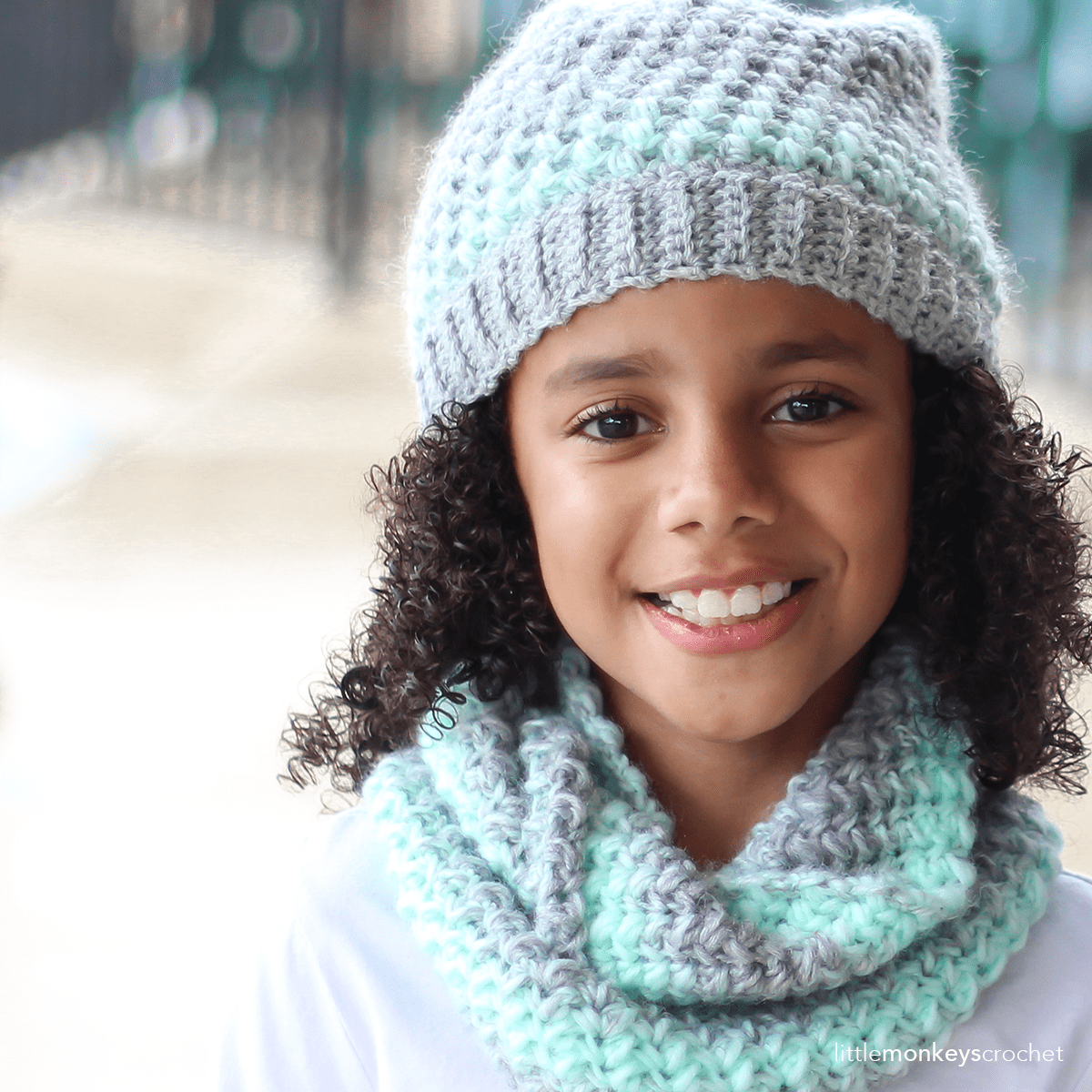
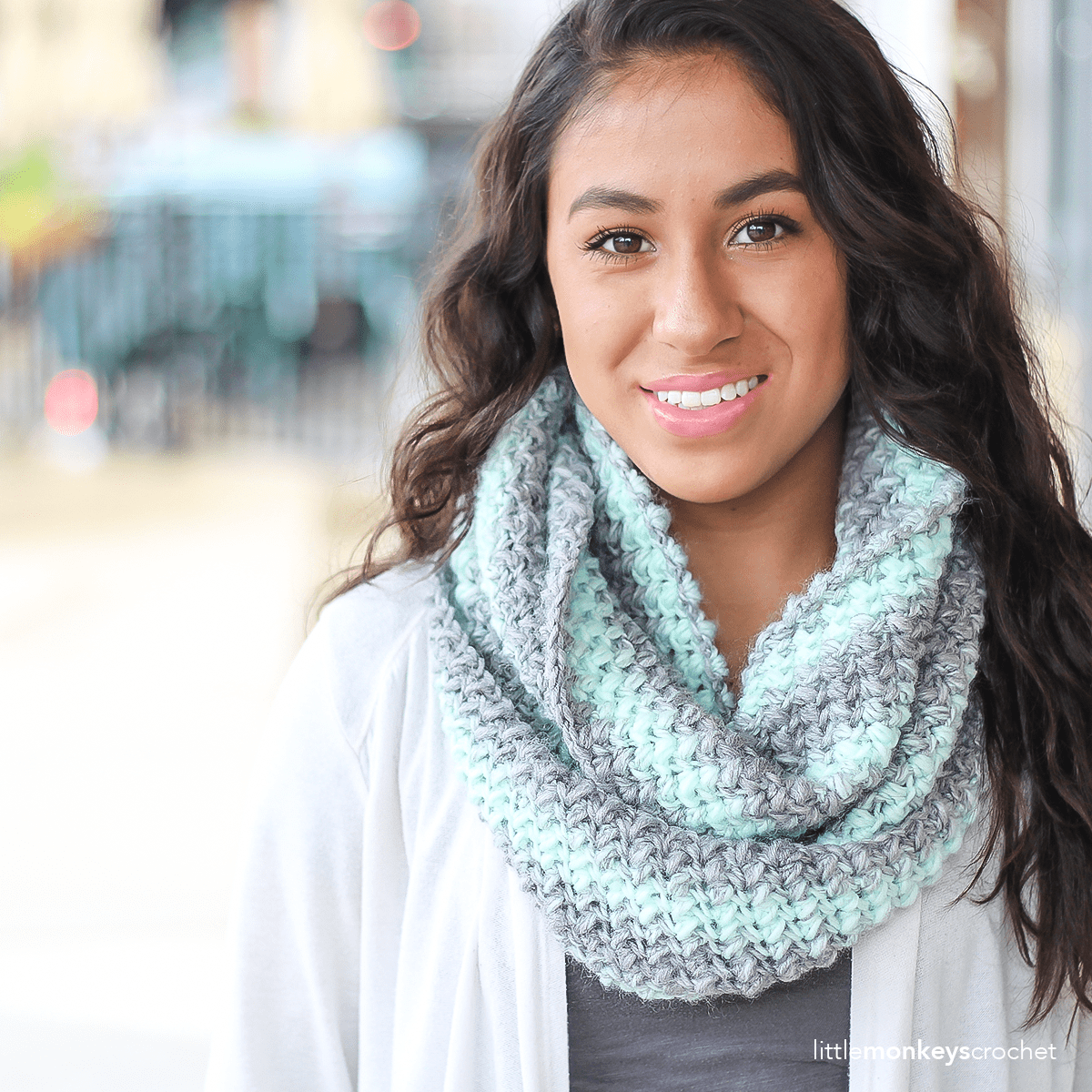
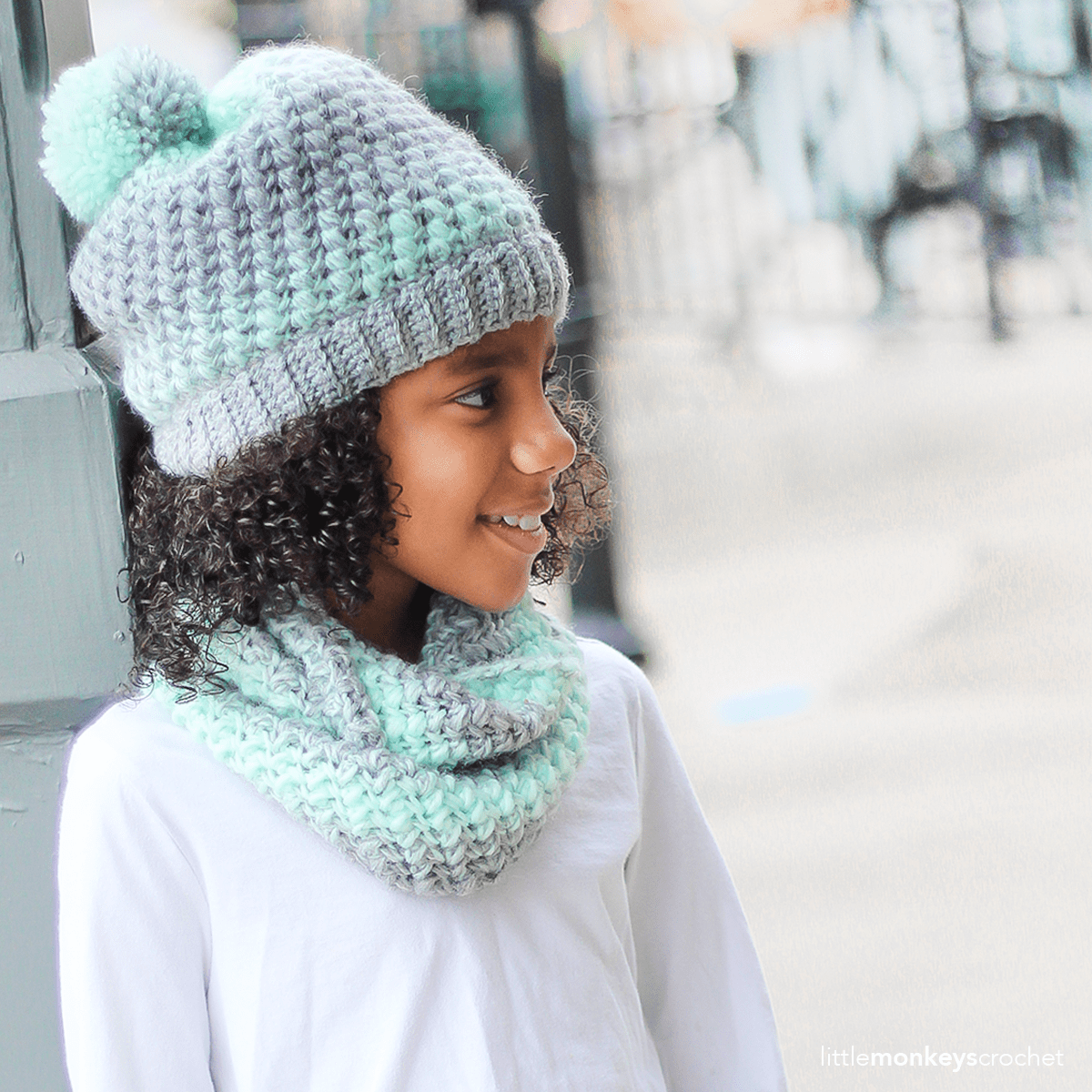
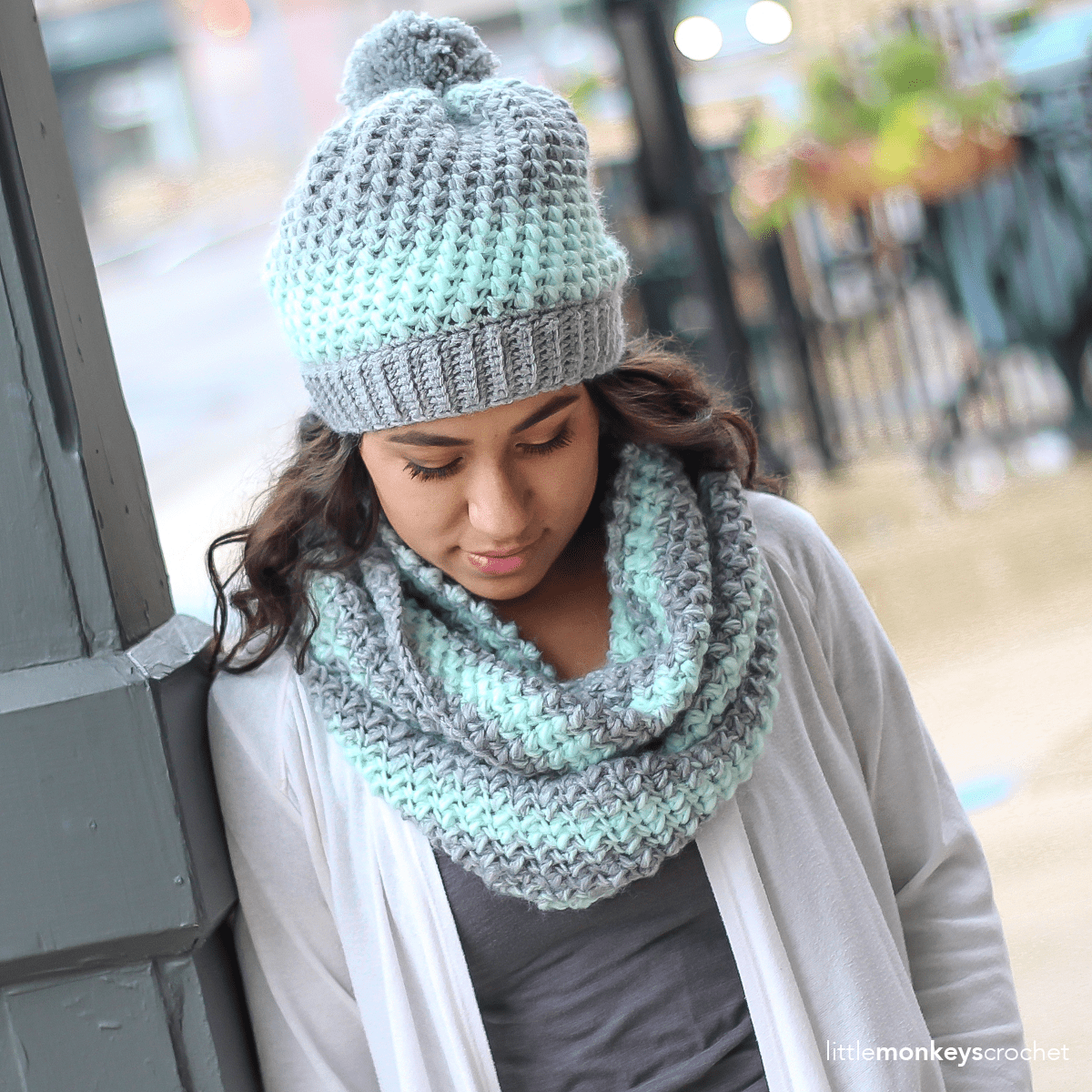
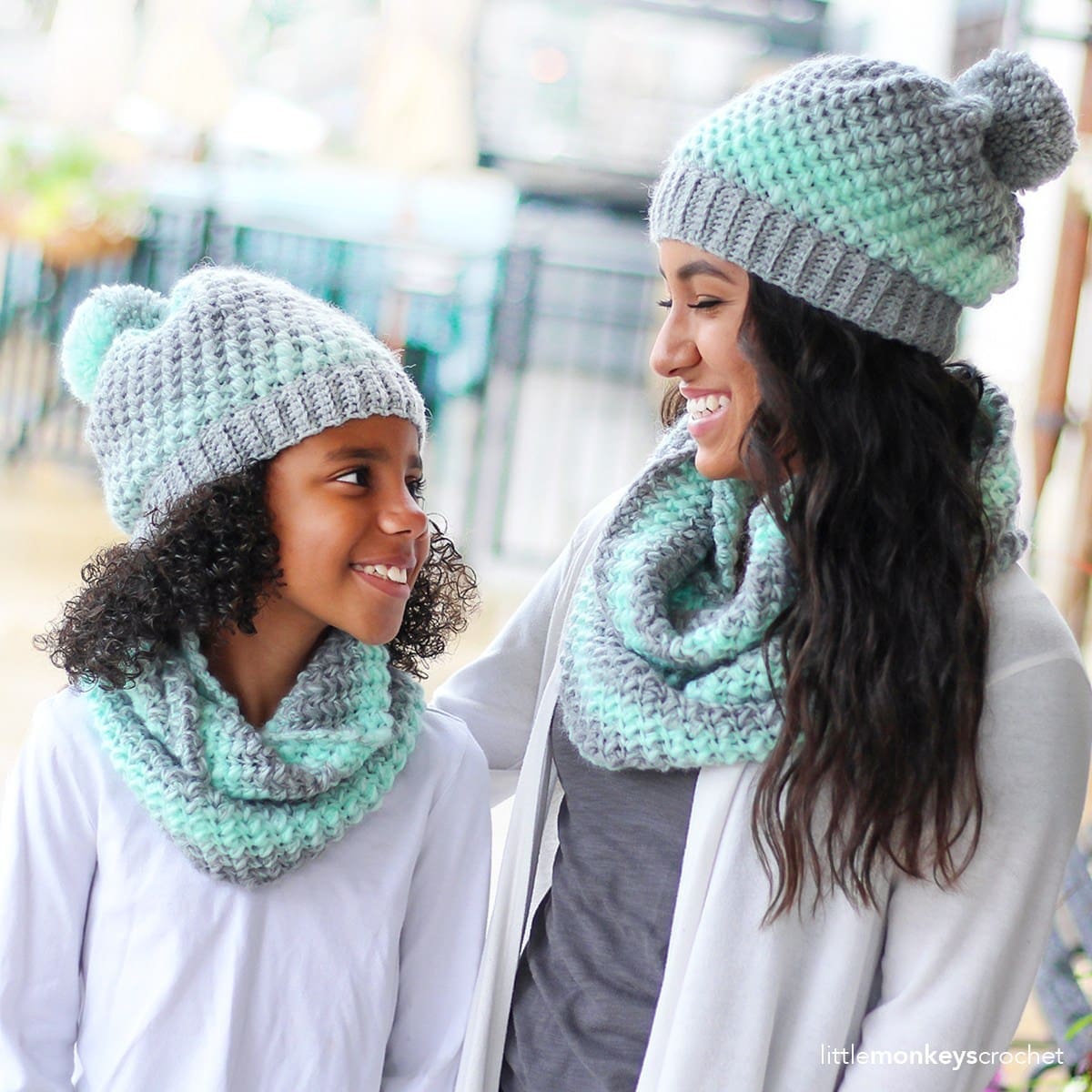
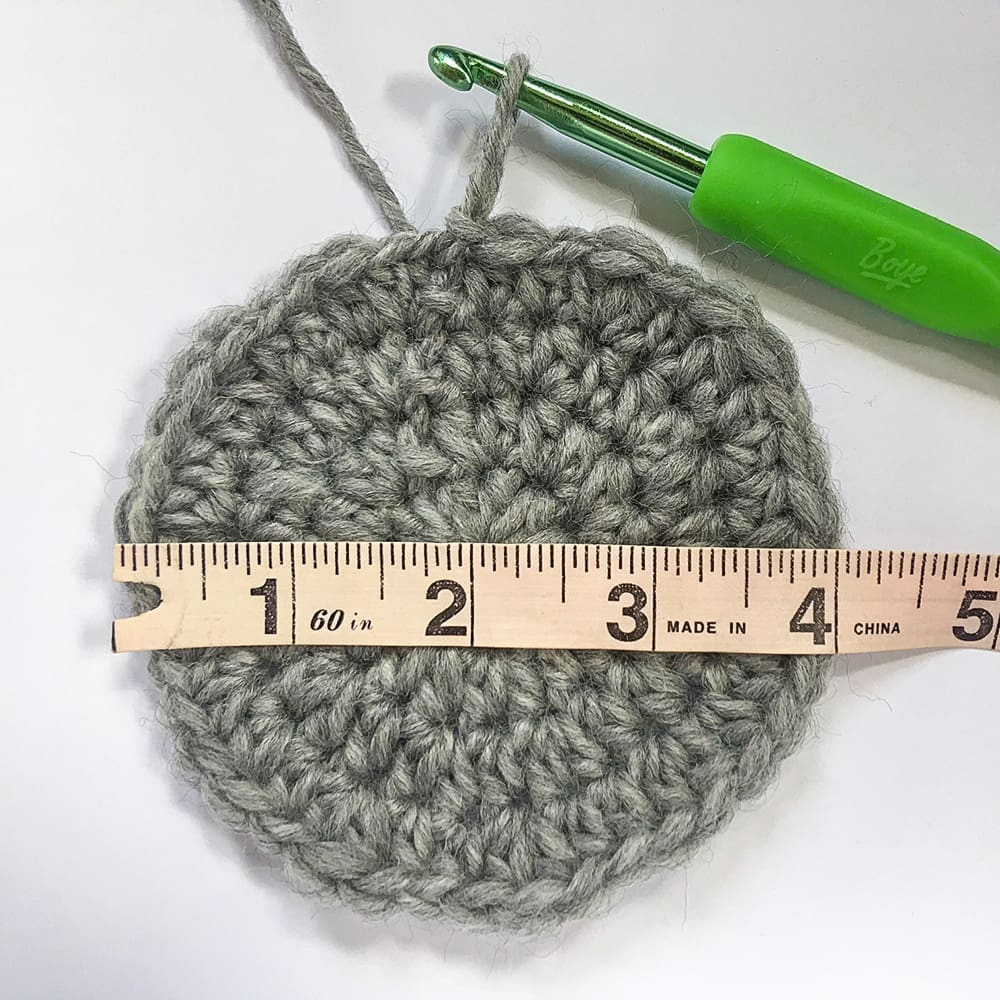
 (4) For the finished measurements of the hats, height is measured from the bottom of the band to the top of the body, pom not included. Width is measured across the bottom of the body of the hat, at the point where the body and the band meet. (Band of hat is smaller but will stretch to fit.)
(4) For the finished measurements of the hats, height is measured from the bottom of the band to the top of the body, pom not included. Width is measured across the bottom of the body of the hat, at the point where the body and the band meet. (Band of hat is smaller but will stretch to fit.)

















































